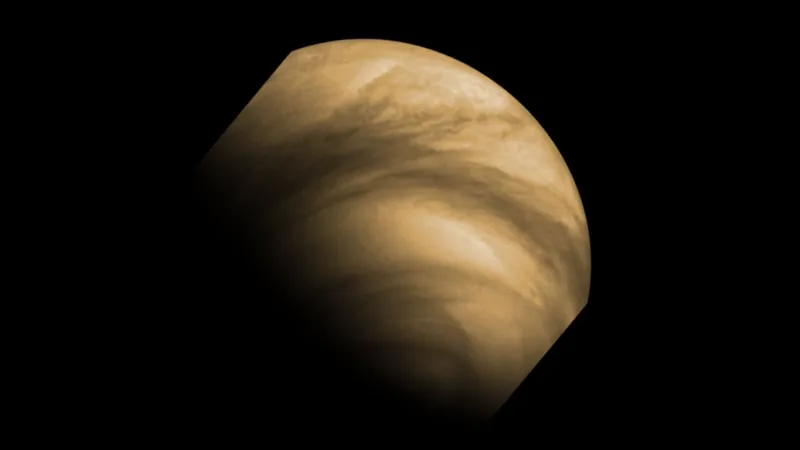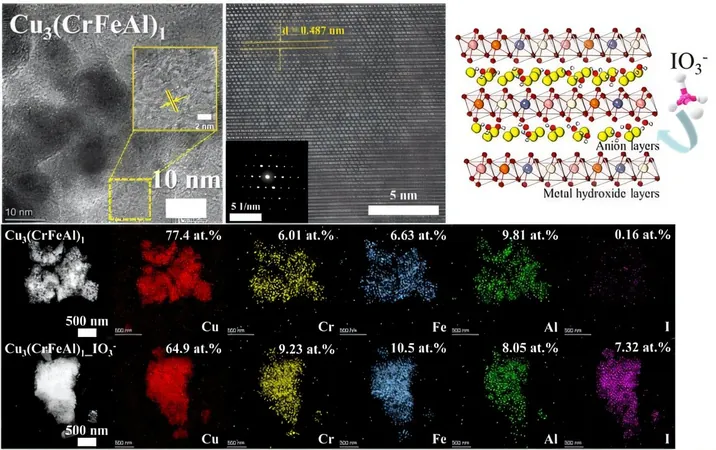
What If Life on Venus is Just Life from Earth? Unraveling the Fascinating Panspermia Theory!
2025-01-16
Author: Arjun
When we think of asteroids, what usually comes to mind is a dramatic collision with our planet, creating craters and chaos. However, there's another intriguing aspect of these cosmic events that scientists are exploring: the ejecta, which are the fragments blasted into space upon impact. The journey of these tiny particles raises a compelling question: How far can they travel?
Imagine ejecta particles being flung miles upwards into the cosmos—potentially reaching other planets! This fascinating idea has scientists pondering whether Earth life might unwittingly hitch a ride across the solar system. Emma Guinan, a researcher at Arizona State University, presented eye-opening insights at the 2024 American Geophysical Union conference, suggesting that ejecta from Earth could carry living cells to Venus.
The theory is rooted in "panspermia," which posits that life can be transferred from one celestial body to another. Guinan speculates that asteroids impacting Earth over billions of years might have ejected material containing robust life forms, including plant cells and microorganisms, into space. If some of these cells survived the tumultuous journey through space, they could potentially thrive in Venus’ atmosphere, contradicting assumptions that such conditions are inhospitable.
But why focus on Venus? Recent discoveries of phosphine—a compound often linked to biological processes—in its atmosphere have ignited interest in the possibility of life beyond Earth.
According to Guinan’s calculations, around 1 billion cells could be transferred to Venus over the course of a billion years! This doesn’t mean that one cell is sent every year; rather, it averages out when considering asteroid impacts. However, it’s crucial to note that not all cells may remain viable or survive their journey.
The atmosphere of Venus presents unique challenges. Suspended at altitudes between 28 and 37 miles (45 to 60 kilometers), researchers find conditions surprisingly similar to Earth’s surface in terms of temperature and pressure, yet vastly different overall. The question that lingers is whether any cells could endure these hostile atmospheres, filled with sulfuric acid clouds and extreme heat.
The stakes can’t be underestimated. To validate the panspermia hypothesis, researchers need to tackle several key questions. Do cells in ejecta survive the trip through the harsh environment of space? And, if they do make it, can they possibly flourish amid Venus’s unforgiving atmosphere?
Guinan emphasizes the increasing importance of advanced imaging and spectroscopic studies of Venus’ clouds, something that future NASA missions, such as DaVinci and Veritas, aim to achieve. These missions could provide crucial insights into the planet's atmosphere and its potential for harboring life.
What’s more, the implications of such findings could redefine our understanding of biology in the universe. Could the first signs of extraterrestrial life be simply a reflection of life that originated right here on Earth? As we continue to probe the mysteries of the cosmos, the lines between worlds blur, raising tantalizing questions about the origins of life itself.
Stay tuned as we explore this groundbreaking science, which could challenge everything we thought we knew about life beyond our planet!



 Brasil (PT)
Brasil (PT)
 Canada (EN)
Canada (EN)
 Chile (ES)
Chile (ES)
 Česko (CS)
Česko (CS)
 대한민국 (KO)
대한민국 (KO)
 España (ES)
España (ES)
 France (FR)
France (FR)
 Hong Kong (EN)
Hong Kong (EN)
 Italia (IT)
Italia (IT)
 日本 (JA)
日本 (JA)
 Magyarország (HU)
Magyarország (HU)
 Norge (NO)
Norge (NO)
 Polska (PL)
Polska (PL)
 Schweiz (DE)
Schweiz (DE)
 Singapore (EN)
Singapore (EN)
 Sverige (SV)
Sverige (SV)
 Suomi (FI)
Suomi (FI)
 Türkiye (TR)
Türkiye (TR)
 الإمارات العربية المتحدة (AR)
الإمارات العربية المتحدة (AR)